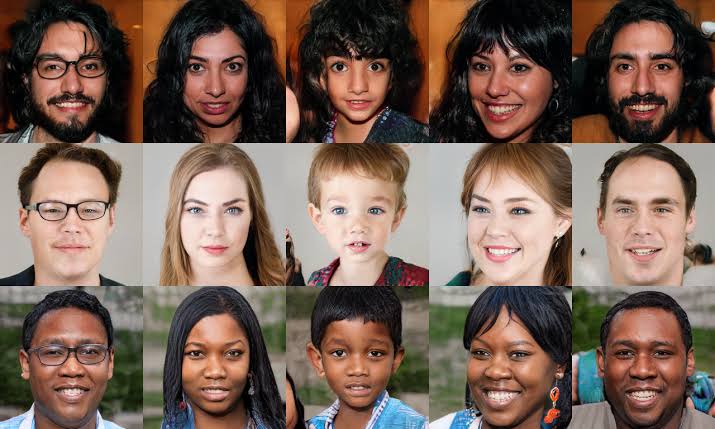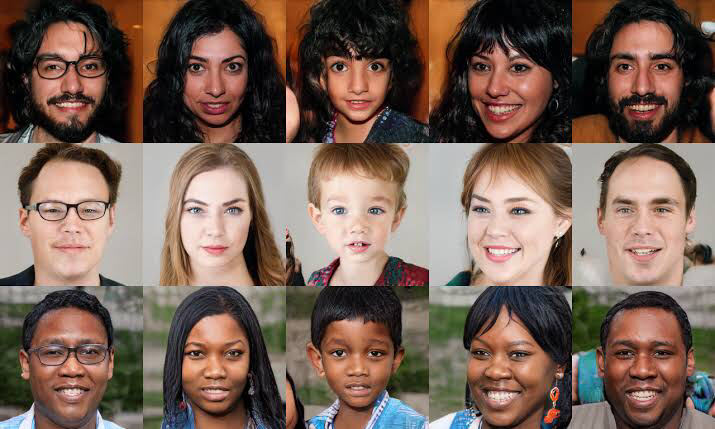How to use StyleGAN for image synthesis
 Barry Ugochukwu
Barry UgochukwuTable of contents

StyleGAN is a powerful and innovative technique that can generate realistic and diverse images from various inputs, such as text, sketches, or other images. In this tutorial, I will show you how to use StyleGAN to create your own synthetic images, and explain some of the key concepts and features behind this amazing technology. Let's get started!
What is StyleGAN?
StyleGAN is a type of generative adversarial network (GAN) that was introduced by Nvidia researchers in 2018. A GAN consists of two neural networks: a generator and a discriminator. The generator tries to produce realistic images that fool the discriminator, while the discriminator tries to distinguish real images from generated ones. The two networks compete with each other, and improve over time, until the generator can produce images that are indistinguishable from real ones.
StyleGAN is an extension of the GAN architecture that introduces several innovations to the generator model, such as:
A mapping network that maps points in a latent space (a high-dimensional space where each point represents a possible image) to an intermediate latent space, where each point controls the style of the image at different scales.
An adaptive instance normalization (AdaIN) layer that applies the style from the intermediate latent space to the feature maps of the generator at each scale.
A noise injection layer that adds stochastic variation to the feature maps of the generator at each scale.
A progressive growing scheme that starts from a low resolution and gradually increases the resolution of the generator and the discriminator.
These innovations allow StyleGAN to generate images with high quality, diversity, and controllability. You can see some examples of images generated by StyleGAN using different datasets below:

Source: https://arxiv.org/abs/1406.2661
How to use StyleGAN?
To use StyleGAN for image synthesis, you need three things:
A pre-trained StyleGAN model or a custom StyleGAN model that you train yourself on your own dataset.
A way to sample points from the latent space or the intermediate latent space, and feed them to the generator model.
A way to visualize or save the generated images.
There are several ways to use StyleGAN, depending on your level of expertise and your goal. Here are some of them:
Use a web-based interface that allows you to interact with pre-trained StyleGAN models and explore different aspects of image synthesis. For example, you can use This Person Does Not Exist, which displays a new face on each web page reload, or Artbreeder, which allows you to mix and mutate different images.
Use a Python library that provides easy access to pre-trained StyleGAN models and various tools for image synthesis. For example, you can use StyleGAN2-ADA-PyTorch, which is the official implementation of StyleGAN2 with adaptive discriminator augmentation (ADA), or PyTorch StudioGAN, which is a PyTorch library for training and evaluating GANs.
Use a Jupyter notebook that guides you through the steps of using StyleGAN for image synthesis. For example, you can use this notebook, which shows you how to generate images from text using CLIP and StyleGAN2, or this notebook, which shows you how to generate anime faces using StyleGAN2.
Use a command-line interface that allows you to run StyleGAN on your own machine or on a cloud service. For example, you can use this repository, which contains scripts for downloading pre-trained models, generating images, projecting images into latent space, and more.
For this article we'll use a python library that provides easy access to pre-trained StyleGAN models and various tools for image synthesis.
Here is a step by step guide:
Sure, I can help you with that. Here is a step by step guide on how to use a Python library that provides easy access to pre-trained StyleGAN models and various tools for image synthesis.
Choose a Python library that suits your needs. For example, you can use StyleGAN2-ADA-PyTorch, which is the official implementation of StyleGAN2 with adaptive discriminator augmentation (ADA), a technique that improves the stability and quality of GAN training with limited data. Alternatively, you can use PyTorch StudioGAN, which is a PyTorch library that provides implementations of various GAN architectures, conditioning methods, adversarial losses, regularization modules, and evaluation metrics.
Install the required packages and dependencies for the chosen library. You can follow the instructions on the GitHub repository of the library or use a package manager such as pip or conda. For example, to install StyleGAN2-ADA-PyTorch, you can run the following command in your terminal:
pip install torch torchvision click requests tqdm pyspng ninja imageio-ffmpeg==0.4.3
Download or prepare your dataset. Depending on the library and the task, you may need to convert your dataset to a specific format or resize your images to a certain resolution. For example, StyleGAN2-ADA-PyTorch uses a ZIP/PNG based dataset format, which you can create using the
dataset_tool.pyscript. PyTorch StudioGAN supports both ZIP/PNG and HDF5 formats, which you can create using themake_dataset.pyscript.Download or train a StyleGAN model. You can either use a pre-trained model provided by the library or train your own model from scratch or by fine-tuning an existing model. For example, to download a pre-trained StyleGAN2-ADA-PyTorch model for generating faces, you can run the following command in your terminal:
python generate.py --outdir=out --network=https://nvlabs-fi-cdn.nvidia.com/stylegan2-ada-pytorch/pretrained/ffhq.pkl
To train your own model using StyleGAN2-ADA-PyTorch, you can run the following command in your terminal:
python train.py --outdir=~/training-runs --data=~/datasets/mydataset.zip --gpus=1 --cfg=paper256 --mirror=1
To train your own model using PyTorch StudioGAN, you can run the following command in your terminal:
python main.py -t True -c configs/BigGAN_cifar10.json -n cifar10_biggan
- Generate images using the StyleGAN model. You can use various tools and options provided by the library to control the generation process, such as sampling from different latent spaces, manipulating styles, projecting images into latent space, mixing styles, etc. For example, to generate 100 random images using StyleGAN2-ADA-PyTorch, you can run the following command in your terminal:
python generate.py --outdir=out --trunc=1 --seeds=0-99 --network=~/training-runs/00000-mydataset-auto1/network-snapshot-000000.pkl
To generate 100 random images using PyTorch StudioGAN, you can run the following command in your terminal:
python main.py -t False -c configs/BigGAN_cifar10.json -n cifar10_biggan -m inception_score -s 0 99
- Evaluate the quality and diversity of the generated images. You can use various metrics provided by the library or external tools to measure how realistic and diverse the generated images are compared to the real ones. For example, some common metrics are Inception Score (IS), Fréchet Inception Distance (FID), Precision and Recall for Distributions of Classifications (PRDC), etc. For example, to calculate FID using StyleGAN2-ADA-PyTorch, you can run the following command in your terminal:
python calc_metrics.py --metrics=fid50k_full --network=~/training-runs/00000-mydataset-auto1/network-snapshot-000000.pkl --dataset=~/datasets/mydataset.zip
To calculate IS using PyTorch StudioGAN, you can run the following command in your terminal:
python main.py -t False -c configs/BigGAN_cifar10.json -n cifar10_biggan -m inception_score -s 0 9999
Conclusion
In this tutorial, I have given you an overview of what StyleGAN is, how it works, and how to use it for image synthesis. I hope you have learned something new and enjoyed this tutorial. If you want to learn more about StyleGAN, I recommend you to read the original papers, watch the videos, and check out the code. Thank you for reading
Subscribe to my newsletter
Read articles from Barry Ugochukwu directly inside your inbox. Subscribe to the newsletter, and don't miss out.
Written by

Barry Ugochukwu
Barry Ugochukwu
I'm a data scientist and a technical content writer who loves to explore and share insights from data. I have experience working with various tools and technologies such as Python, Power BI, TensorFlow, PyTorch, and more. I also enjoy writing about data science topics such as artificial intelligence, deep learning, natural language processing, computer vision, and more. When I'm not writing or doing data science stuff, I like to play chess🏁🏁🏁 read books📚📚📚 or discuss about space🌠🌠🌠 If you want to learn more about me or my work, Check out my Github profile Read my blog Follow me on Twitter Contact me on barryugo1000@gmail.com Thank you for visiting and I hope to hear from you soon!